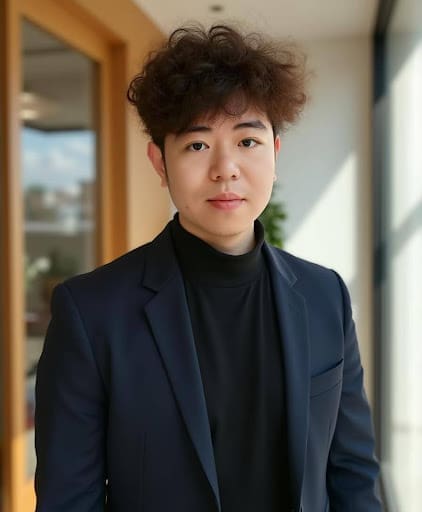When precision defines progress, even the smallest inefficiencies can stall discovery. Every day, scientists spend hours manually counting cells under microscopes: a routine that feels more analog than modern. Qiushi Wang, the founder and CEO of Labro Inc., decided that science deserved better. Backed by $1.5 million in early funding, Wang is leading a quiet revolution in laboratory automation, creating tools that eliminate repetitive manual tasks and give researchers time to focus on breakthroughs.
A mechanical engineer and biomedical innovator, Wang founded Labro in 2024 to bridge the divide between engineering and biology. His company’s flagship product, the first fully automated-and-wall-mountable cell-counting device, is compact enough to fit inside a biosafety cabinet yet powerful enough to redefine one of the most fundamental procedures in biological research.
Automating the Backbone of Research
Cell counting sits at the heart of every biology experiment. It determines how samples are measured, drugs are tested and data is validated. Yet despite decades of advancement in scientific instrumentation, the process itself remains almost entirely manual. Labro’s innovation changes that dynamic.
The company’s vision-based analysis system automatically identifies and quantifies cells without user intervention, operating seamlessly within biosafety workflows. Its wall-mounted configuration and minimal footprint make it viable for research teams working in tight lab spaces. It also has information data storage, which deducts or minimizes the error and reduces contamination.
“We wanted to design something that feels effortless,” says Wang. “A tool that gives scientists the confidence of accuracy without the burden of complexity.”
Unlike traditional cell counters requiring calibration or trained operators, Labro’s device is designed for immediate integration: plug, place and analyze it. It improves precision alongside reproducibility and, better yet, saves an estimated $8,000 annually per user through reduced labor and fewer human errors. With a projected $2 billion market opportunity, Labro’s technology positions itself at the core of the next wave of accessible lab automation.
From Research Bench to Startup Boardroom
Wang’s path to Labro began inside Rensselaer Polytechnic Institute’s Mills Lab, where he studied tumor mechanics using computational imaging and modeling. Observing researchers lose hours to repetitive, mechanical tasks revealed a simple truth: innovation in biology was, contrary to lack of ideas, being slowed by outdated instruments.
“I saw brilliant scientists spending more time managing tools than conducting experiments,” Wang recalls. “That inefficiency became my motivation.”
What began as a student project soon evolved into a venture with national attention. Labro has earned First Place at the NYBPC Capital Region, the ‘Most Innovative’ Award at the 2025 NextGen Entrepreneur Summit and entry into the National Science Foundation’s I-Corps Program: a trifecta of milestones validating both the science and scalability behind Wang’s vision.
Beyond recognition, Labro’s rise represents a shift toward functional innovation, where technology amplifies the scientist instead of overshadowing them. Wang’s engineering background allowed him to fuse precision hardware design with user-centered simplicity, building a product that embodies the principle of “automation that feels human.”
Making Science More Accessible
While most lab automation solutions cater to large research institutions, Labro aims to democratize it. By focusing on affordability, portability and intuitive use, Wang and his team are making advanced tools accessible to academic labs, startups and educational institutions worldwide.
“Automation should not be exclusive,” Wang says. “Our mission is to empower every researcher, from small academic groups to national labs, with instruments that simplify their work without compromising results.”
The Road Ahead
The company’s next phase will build on that mission. With funding secured, Labro is preparing for pilot deployments in academic and clinical labs across the United States while expanding its product portfolio beyond cell counting to include new tools for imaging, measurement and sample handling. Each development follows the same guiding principle: enable precision without complexity.
“The best technology, which doesn’t make noise, just works,” Wang reflects. “When scientists can focus entirely on their ideas instead of their instruments, that’s when progress accelerates.”
From a university lab bench to an emerging biotechnology company, Labro’s journey captures a critical moment in the evolution of science: the return of simplicity to a field defined by precision. Wang’s vision is reshaping how research gets done: proving that true innovation, which does not always involve doing more, concerns doing better.
